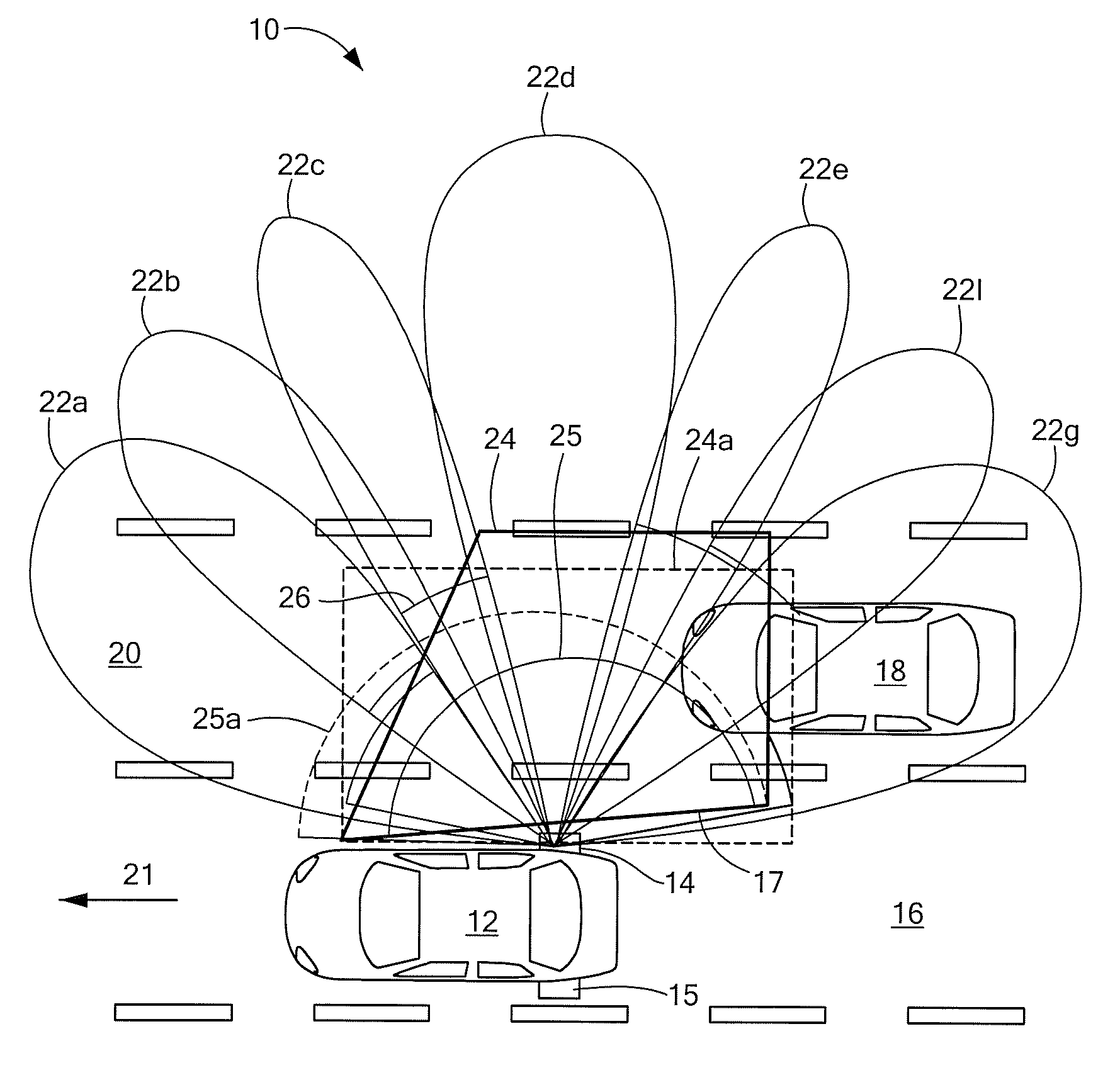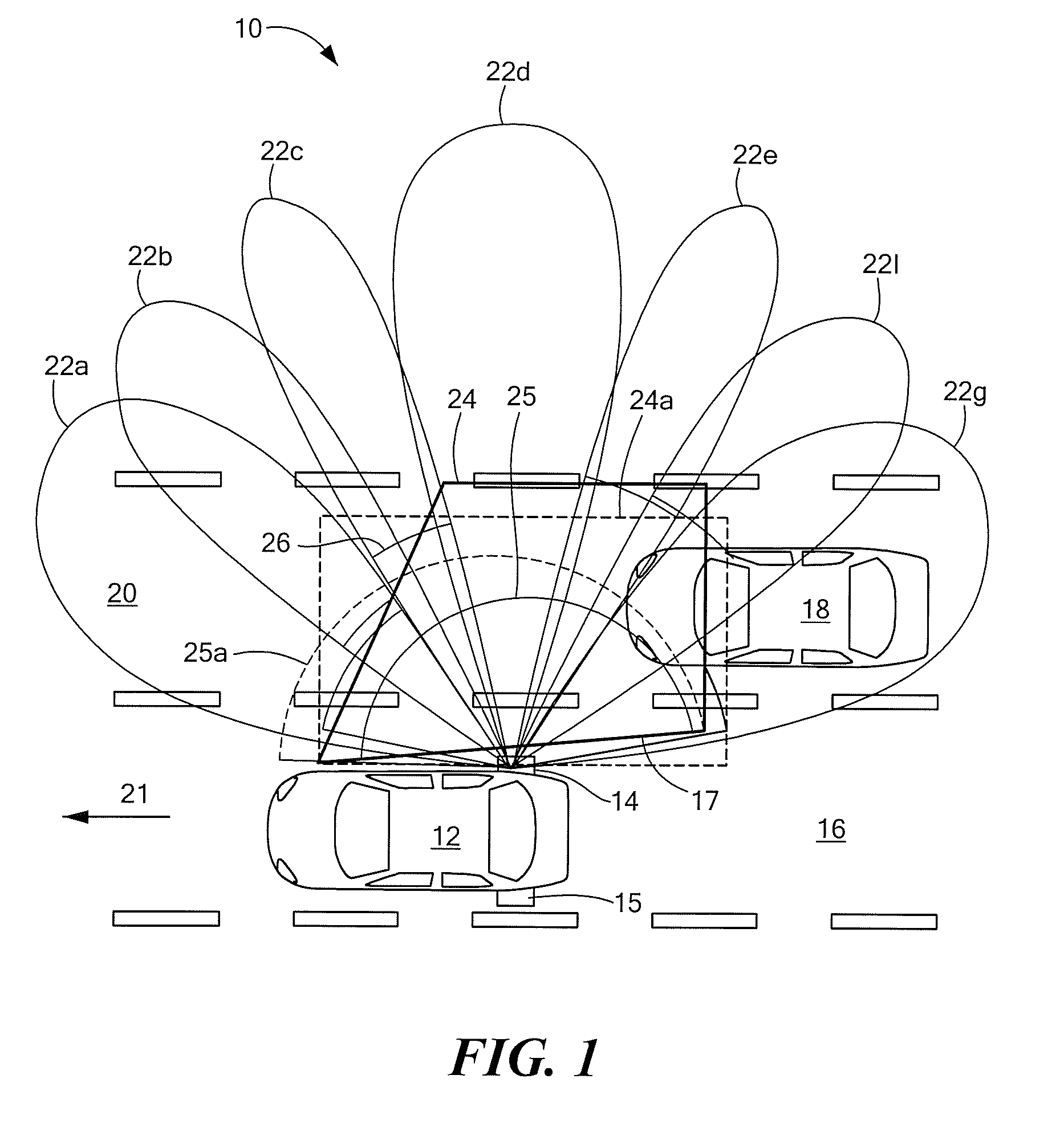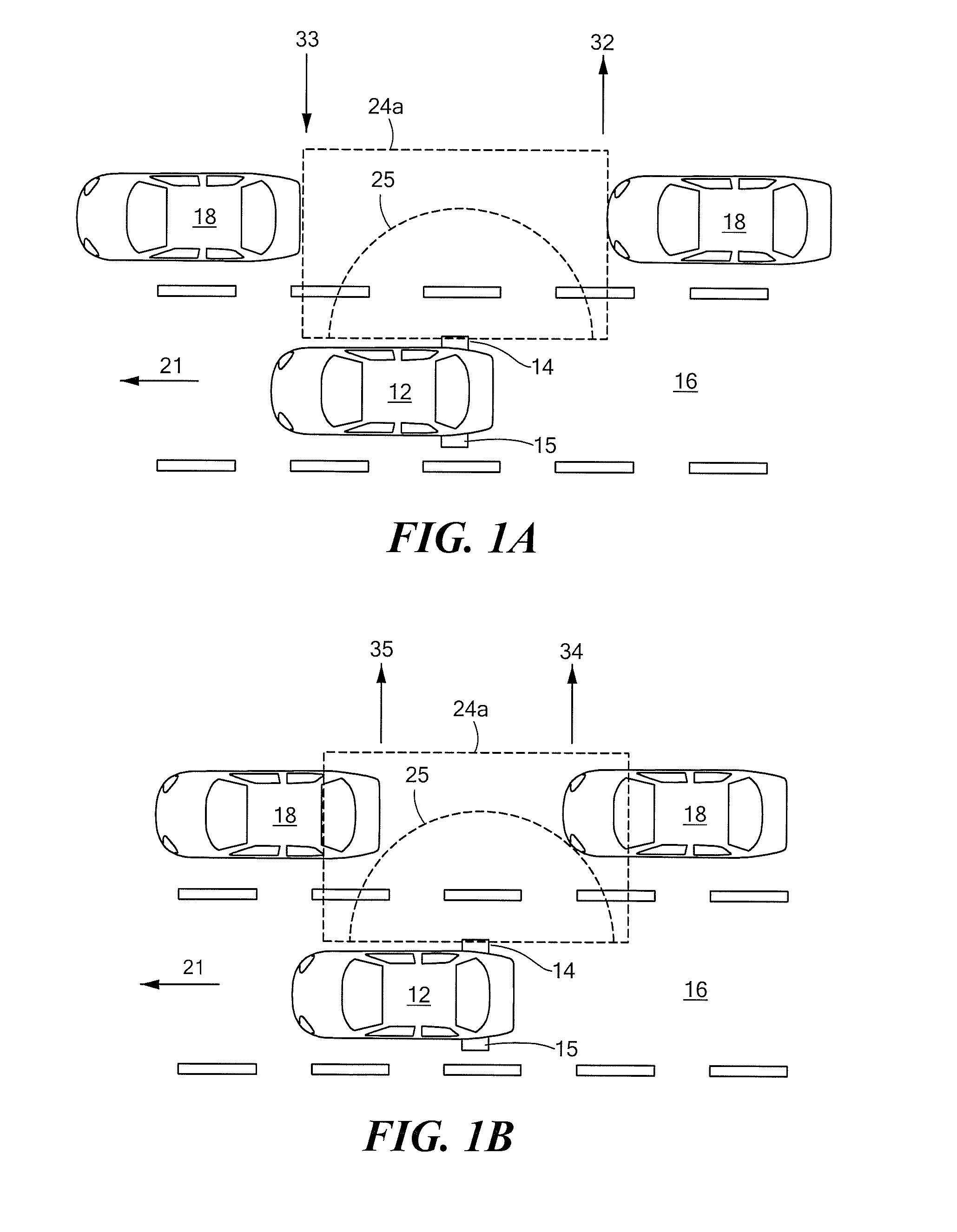Automotive Radar Sensor Blockage Detection System and Related Techniques
a technology for automotive radar and detection system, applied in the field of radars, can solve the problems of preventing, reducing the performance of the sensor system, and reducing the proper operation of the automotive radar sensor
- Summary
- Abstract
- Description
- Claims
- Application Information
AI Technical Summary
Benefits of technology
Problems solved by technology
Method used
Image
Examples
Embodiment Construction
[0021]Described herein is an approach for generating a missed alert signal and in particular, a blockage alert signal in a sensor such as a side object detection (SOD) sensor such as that described in U.S. Pat. No. 6,784,828 assigned to the assignee of the present application or a forward looking sensor (FLS) such as that described in U.S. Pat. No. 5,929,802 also assigned to the assignee of the present application. While the techniques described herein are described as used in a vehicle radar system (a / k / a an automotive radar system), it should be appreciated that the techniques described herein may be used in any fixed (i.e. stationary) or mobile sensor or detection system. Hence, the techniques described herein are not dependent upon any specific hardware configuration. Rather, as will be seen below, the technique can operate with input data from any sensor or detection system rather than being for operation solely with a radar system. Furthermore, reference is sometimes made here...
PUM
 Login to View More
Login to View More Abstract
Description
Claims
Application Information
 Login to View More
Login to View More - R&D
- Intellectual Property
- Life Sciences
- Materials
- Tech Scout
- Unparalleled Data Quality
- Higher Quality Content
- 60% Fewer Hallucinations
Browse by: Latest US Patents, China's latest patents, Technical Efficacy Thesaurus, Application Domain, Technology Topic, Popular Technical Reports.
© 2025 PatSnap. All rights reserved.Legal|Privacy policy|Modern Slavery Act Transparency Statement|Sitemap|About US| Contact US: help@patsnap.com



